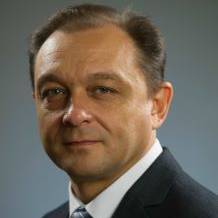3D Scanning for Heritage Modelling, Virtualization and Musealization
A special issue of Applied Sciences (ISSN 2076-3417). This special issue belongs to the section "Civil Engineering".
Deadline for manuscript submissions: closed (31 October 2023) | Viewed by 3600
Special Issue Editors
Interests: geodesy; mine surveying; engineering geodesy; terrestrial laser scanning; airborne laser scanning; photogrammetry; SfM-MVS; remotely piloted aircraft systems (RPAS)
Special Issues, Collections and Topics in MDPI journals
Interests: geographic information systems (GIS); 3D visualization; spatial modelling; applied geology; remote sensing and data collection; geostatistics; CAD systems
Special Issues, Collections and Topics in MDPI journals
Interests: photogrammetry; terrestrial and airborne laser scanning; digitalization of cultural heritage; deformation measurement; surveying; remotely piloted aircraft systems
Interests: photogrammetry; terrestrial and airborne laser scanning; digitalization of cultural heritage; deformation measurement; surveying; remotely piloted aircraft systems
Special Issue Information
Dear Colleagues,
Cultural, technical, and natural heritage deserve to be preserved as much as possible for future generations in their original condition. However, in their natural location, they are often prone to degradation and damage by external influences or human activity. Modern surveying techniques such as laser scanning and photogrammetry enable the creation of almost perfect digital 3D models of objects of various sizes and shapes. High accuracy of measurement and density of points using these methods, together with high work efficiency, currently predetermine them as the first choice when documenting the shape of an object. Presentation and archiving of heritage objects is important for both movable and immovable objects. Three-dimensional modeling, virtualization, and digital museal archiving allow for instant, accurate, and detailed viewing and exploration, even with remote access.
In this Special Issue, we invite submissions exploring excellent research and recent advances in the fields of cultural, technical, and natural heritage modeling, presentation, and archiving. Both theoretical and experimental studies are welcome, as well as comprehensive review and survey papers.
Dr. Ludovit Kovanic
Dr. Peter Blišťan
Dr. Marek Fraštia
Dr. Marián Marčiš
Guest Editors
Manuscript Submission Information
Manuscripts should be submitted online at www.mdpi.com by registering and logging in to this website. Once you are registered, click here to go to the submission form. Manuscripts can be submitted until the deadline. All submissions that pass pre-check are peer-reviewed. Accepted papers will be published continuously in the journal (as soon as accepted) and will be listed together on the special issue website. Research articles, review articles as well as short communications are invited. For planned papers, a title and short abstract (about 100 words) can be sent to the Editorial Office for announcement on this website.
Submitted manuscripts should not have been published previously, nor be under consideration for publication elsewhere (except conference proceedings papers). All manuscripts are thoroughly refereed through a single-blind peer-review process. A guide for authors and other relevant information for submission of manuscripts is available on the Instructions for Authors page. Applied Sciences is an international peer-reviewed open access semimonthly journal published by MDPI.
Please visit the Instructions for Authors page before submitting a manuscript. The Article Processing Charge (APC) for publication in this open access journal is 2400 CHF (Swiss Francs). Submitted papers should be well formatted and use good English. Authors may use MDPI's English editing service prior to publication or during author revisions.
Keywords
- natural heritage
- cultural heritage
- technical heritage
- terrestrial laserscanning (TLS)
- airborne laserscanning (ALS)
- terrestrial photogrammetry
- aerial photogrammetry
- SfM-MVS
- point cloud
- DSM
- virtual reality
- augmented reality








